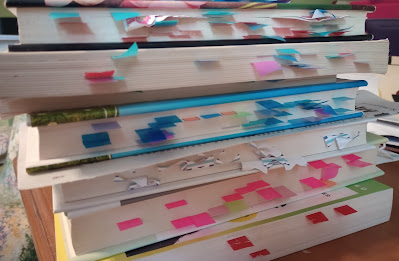If you’ve read Catching Happiness for any length of time, you know I love to read. I do it to learn, to be inspired, to be entertained, and to be comforted. Over the past few months, I’ve sought out books that would help me deal with the emotional upheaval and grief I’ve been coping with. I thought I’d share three of the books I turned to for comfort and strength to keep going when my heart is hurting and I feel unequal to the task of living.
1. Letting Go of the Person You Used to Be: Lessons on Change, Loss, and Spiritual Transformation, Lama Surya Das. Talk about the
right book at the right time! I bought this on a whim at my library’s used book
sale, and I’m so glad I did. I read a few pages every day during the sad time
leading up to my mom’s death. Surya Das is the highest trained American lama in
the Tibetan tradition of Buddhism, and practically every page held food for
thought.
Takeaway quotes:
“When we lose people we love—and we will all lose people we love—seekers are immediately confronted by a spiritual conundrum: Even though our hearts are breaking, how can we search inward and continue to know and feel the love we all carry at our core? Being separated from those we love invites us to take a fresh and deeper look at the meaning of love itself. This is the major challenge of love.”
“Mourning is a necessary process as well as a deep and significant spiritual experience. It brings us closer to the ground of our being and our felt sense of authenticity. We need to intelligently process our most difficult experiences in order to regain balance, harmony, and inner peace. But there comes a time when it is helpful to seek and find ways to release the pain. Yes, certain losses remain with us; they are part of our history and our karma. But that doesn’t mean that it is appropriate for us to spend our lives grieving. We need to find ways to peacefully coexist with our sadness. We can embrace our pain and our losses and be greater and more authentically real for doing so.”
2. Choose Wonder Over Worry: Moving Beyond Fear and Doubt to Unlock Your Full Potential, Amber Rae. I frequently do battle with fear and
worry, so when I heard of this book on The Lazy Genius podcast I almost
immediately ordered a copy. According to Rae, Worry says things like, “Am I
good enough?” “Does my voice matter?” and “What if I fail?” Wonder says, “How
can I get better?” “What do I have to say?” and “Failure=Learning.” A slight
alteration in viewpoint, but a powerful one. She discusses the myths of worry
and how to combat them, and how wonder and worry can work together when wisdom “runs
the show.”
Takeaway quote:
“When Wisdom runs the show, Worry and Wonder respect each other, move as allies, and walk hand in hand in the direction of what is most aligned and true. It’s called The Union.
“The Union is when we welcome fear, sadness, grief, shame, joy, heartbreak, vulnerability, and unworthiness to all have a seat at the table of our heart. It’s when we invite every part of us that we’ve denied, repressed, or abandoned to come forth and join us. Not so that we can ‘fix it’ or ‘make it better’ or ‘overcome it,’ but so we can acknowledge it and embrace it lovingly for what it is: an aspect of who we are. When we do this, we tap in to a wellspring of creativity, connection, vitality, and flow. This is the place from which our greatest contributions, deepest connections, and most profound experiences emerge. This is the place from which we return home to who we are.”
Takeaway quotes:
“Microjoys aren’t small. Instead, they are easily accessible, and they don’t require that we reach too far from where we are (in any moment) to discern them. They’re called microjoys because seeking any semblance of great joy in the midst of sorrow simply wasn’t accessible to me when going through the most difficult things.”
From the essay titled “Busy Being Busy”:
“Right after my mom died and only months after the death of my nephew, I took to painting walls, making and doing anything that I possible could to avoid sitting with the hardest things. I knew the moment I sat still I would fall apart. And I also knew that I wasn’t yet ready to fall apart.”
[Same! Even though I say I want to rest and recover, I still
find myself busy.]
These aren’t the only books I’ve found comfort in over the past few months, but they’re ones I’ve returned to when I’m in need of inspiration and encouragement. Writing this blog post, I’ve felt more like myself than I have in a long, long time. I hope, if you’re in need of some encouraging reading, that you’ll check out one or more of these books.
If you have any favorite comforting and encouraging
reads, please share in the comments!




.jpg)













